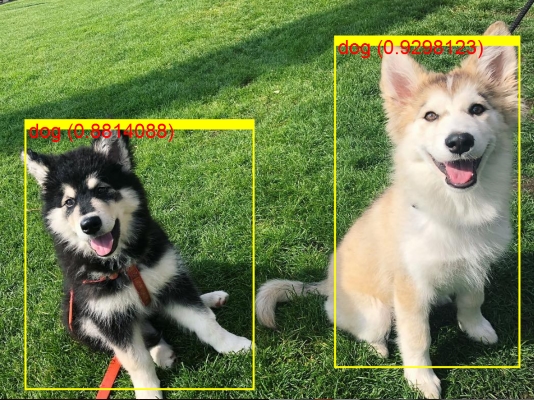C# 人工智能
参考:https://dotnet.microsoft.com/apps/machinelearning-ai/ml-dotnet
ML.NET
An open source and cross-platform machine learning framework
Supported on Windows, Linux, and macOS
Built for .NET developers
With ML.NET, you can use your existing .NET skills to easily integrate ML into your .NET apps without any prior ML experience.
Custom ML made easy with AutoML
ML.NET offers AutoML and productive tools to help you easily build, train, and deploy high-quality custom ML models.
Extended with TensorFlow & more
ML.NET allows you to leverage other popular ML libraries like Infer.NET, TensorFlow, and ONNX for additional ML scenarios.
Trusted and proven at scale
Use the same ML framework used by recognized Microsoft products like Power BI, Microsoft Defender, Outlook, and Bing.
//Step 1. Create an ML Context
var ctx = new MLContext();
//Step 2. Read in the input data from a text file for model training
IDataView trainingData = ctx.Data
.LoadFromTextFile<ModelInput>(dataPath, hasHeader: true);
//Step 3. Build your data processing and training pipeline
var pipeline = ctx.Transforms.Text
.FeaturizeText("Features", nameof(SentimentIssue.Text))
.Append(ctx.BinaryClassification.Trainers
.LbfgsLogisticRegression("Label", "Features"));
//Step 4. Train your model
ITransformer trainedModel = pipeline.Fit(trainingData);
//Step 5. Make predictions using your trained model
var predictionEngine = ctx.Model
.CreatePredictionEngine<ModelInput, ModelOutput>(trainedModel);
var sampleStatement = new ModelInput() { Text = "This is a horrible movie" };
var prediction = predictionEngine.Predict(sampleStatement);Built for .NET developers
With ML.NET, you can create custom ML models using C# or F# without having to leave the .NET ecosystem.
ML.NET lets you re-use all the knowledge, skills, code, and libraries you already have as a .NET developer so that you can easily integrate machine learning into your web, mobile, desktop, games, and IoT apps.
Sentiment analysis
Analyze the sentiment of customer reviews using a binary classification algorithm.
Product recommendation
Recommend products based on purchase history using a matrix factorization algorithm.
Price prediction
Predict taxi fares based on parameters such as distance traveled using a regression algorithm.
Customer segmentation
Identify groups of customers with similar profiles using a clustering algorithm.
Object detection
Recognize objects in an image using an ONNX deep learning model.
Fraud detection
Detect fraudulent credit card transactions using a binary classification algorithm.
Sales spike detection
Detect spikes and changes in product sales using an anomaly detection model.
Image classification
Classify images (for example, broccoli vs. pizza) using a TensorFlow deep learning model.
Sales forecasting
Forecast future sales for products using a regression algorithm.
You can find more ML.NET samples on GitHub, or take a look at the ML.NET tutorials.
Custom ML made easy with AutoML
ML.NET offers Model Builder (a simple UI tool) and ML.NET CLI to make it super easy to build custom ML Models.
These tools use Automated ML (AutoML), a cutting edge technology that automates the process of building best performing models for your Machine Learning scenario. All you have to do is load your data, and AutoML takes care of the rest of the model building process.
Explore ML.NET Model BuilderExtended with TensorFlow & more
ML.NET has been designed as an extensible platform so that you can consume other popular ML frameworks (TensorFlow, ONNX, Infer.NET, and more) and have access to even more machine learning scenarios, like image classification, object detection, and more.

Data sourced from Machine Learning at Microsoft with ML.NET paper. Results for sentiment analysis, using ~900 MB of an Amazon review dataset. Higher accuracy and lower runtime are better.
High performance and accuracy
Using a 9GB Amazon review data set, ML.NET trained a sentiment analysis model with 95% accuracy. Other popular machine learning frameworks failed to process the dataset due to memory errors. Training on 10% of the data set, to let all the frameworks complete training, ML.NET demonstrated the highest speed and accuracy.
The performance evaluation found similar results in other machine learning scenarios, including click-through rate prediction and flight delay prediction.









